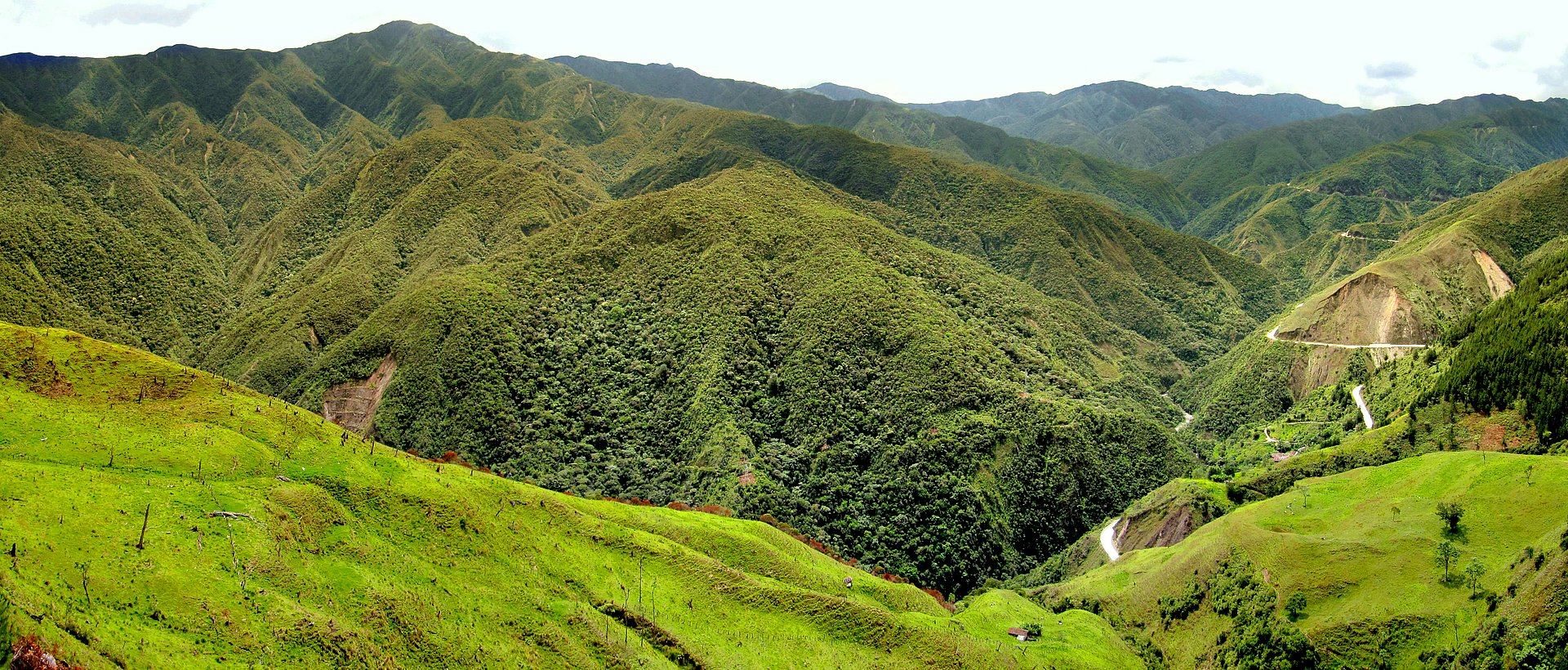Researchers present new aspects of land use for Ecuador
Environment protection, profit and safety through mosaic cultivation

"We wanted to find out how a landscape has to be composed in order to render many ecosystem services at the same time and as safely as possible", explains the lead author of the study Prof. Thomas Knoke with the Professorship of Forest Management at the TUM. Experts use the term ecosystem services to refer to the effects of an ecosystem that are important for human well-being, such as protection against erosion, soil formation or provision of energy sources.
In their study, Knoke and his colleagues simulated various land use concepts. The results have now been published in the magazine "Nature Communications". The simulations are based on data that had been gathered by a multi-disciplinary team of researchers in the tropical rainforest of Ecuador over a period of 15 years. There, the scientists had investigated the reintegration of abandoned agricultural areas into forestry or agricultural production.
Compensating for uncertainties
The aim of the simulations carried out on the basis of these investigations was to take 22 indicators into account in a land use plan on as equal a footing as possible. Sixteen of the indicators are criteria from the field of ecology such as e.g. carbon storage, protection against erosion, reduction of the runoff of surface water and climate regulation. Eight criteria are from the field of socio-economics, including the question of how profitable the use is and what kind of cultivation the local farmers would prefer.
Uncertainties were also incorporated into the simulations. Reasons for these uncertainties include, for example, fluctuations in the production of foodstuffs and wood as well as price changes. A good mixture of different land use forms has a balancing effect in this context, because not all land use forms are affected by the uncertainties to an equal degree. "It works like a share portfolio in which the risk is of course spread over many investments", explains Knoke.
Area mosaic of five concepts
The scientists had already worked out the following five usage concepts for the abandoned agricultural areas in a preceding study and were able to use the results for the simulation of multifunctional land use:
• no cultivation – abandoned pasture areas are left alone,
• forestry utilization – planting with an indigenous species of alder,
• forestry utilization - planting with an introduced species of pine,
• extensive pasture utilization - mechanical weed control, then utilization after initial fertilization,
• intensive pasture utilization – chemical weed control, then utilization with regular fertilization.
The optimum result provided by the simulations was a kind of area mosaic: 46 percent of forestry utilization, with 21 percent indigenous alders and 25 percent of exotic pines, 10 percent extensive pasture utilization, 20 percent intensive pasture utilization. 24 percent of the landscape is not to be used at all, but instead rather left to natural succession. The concept of combining different land use options provides a buffer in the event of under-average ecosystem services from an individual land use component, because the other land use alternatives can balance this out.
Few indicators will not lead to optimal multitasking
If, instead of 22 indicators, only individual ecosystem services are optimized, such as only socio-economic ones for example, very uniform landscapes can arise. Although a land-use mosaic is the best concept for balancing out uncertainties, the influence of the uncertainties is not great enough in all scenarios. It depends on precisely which ecosystem services are optimized and how great their uncertainties are. If, for example, only biomass production, hydrological indicators or climate regulation are defined as the sole aim of the land use then this will result in uniform landscapes which are either solely characterized by agriculture or by forestry.
Protection for the rainforest
On 385 to 472 million hectares of land around the world, the previous agricultural or forestry use of the land has been abandoned. If these area resources could be transformed into productive, multifunctional landscapes, this would contribute to the protection of the endangered tropical forest. "At the moment there is the tendency to afforest such areas solely with exotic types of trees", says forest scientist Knoke. "This is, however, to be critically regarded against the background of the now clearly proven major advantages of diversified land use." He says, on the other hand, that incentives are necessary – especially financial support of the farmers – in order to be able to implement the concept of diversified land use.
The researchers now want to apply their planning approach to other types of landscapes around the world as well. In this application, the existing forms of land use, such as e.g. natural forest, active agricultural land use and plantations, are also to be incorporated. Another important point is the explicit spatial distribution of the types of land use and structural elements of the landscape – such as hedges.
Publication: Knoke T., et al. (2016): Compositional diversity of rehabilitated tropical lands supports multiple ecosystem services and buffers uncertainties, Nature Communications
DOI: 10.1038/ncomms11877
The study was funded by the German Research Foundation (research group FOR 402 and 816, transfer projects PAK 823-825, www.tropicalmountainforest.org/). Scientists from the following institutes were involved in the study: Technical University of Munich; University of Bayreuth; University of Marburg; University of Münster; Justus Liebig University Gießen; Universidad Técnica Particular de Loja, Ecuador; Memorial University, St. John’s, Canada; Karlsruhe Institute of Technology.
Contact:
Prof. Dr. Thomas Knoke
Technical University of Munich
Tel.: +49 8161 71-4700
knoke@tum.de
waldinventur.wzw.tum.de